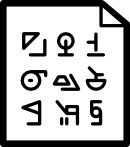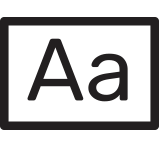Openness in education includes accessibility for those with individual needs and learning disabilities. It’s something to remember when we create educational resources, but also when we think about education in a wider context, when preparing lessons plans or considering teaching methods. Dorota Orzeszek, our specialist in accessibility, has prepared some pointers on how to upload accessible educational materials.
How do you ensure the accessibility of your text?

1. Make sure that it has a clear and logical structure.

2. Any emphases, images, and additional shapes should serve a purpose (to highlight an important concept, add context, etc.).

3. Create a table of contents – don’t forget chapter titles and subtitles. It’s important that they clearly relate to the contents.

4. Use simple, succinct language. Pare down the text as much as possible.

5. Remember your audience, and adjust the text to their level.

6. When selecting fonts, remember to pick something simple. If you’re planning to print the materials, pick a minimum font size of 12pt.

7. If you plan to use color in your text, pay attention to the contrast between the background and the words. The background should be a simple color or gradient.

8. Don’t replace the text with graphics, as they will not be accessible for those using assistive technology.

9. Clearly label graphs and charts. Use colors with differing saturation and texture.

10. Add alternative text to all images, and transcriptions for videos.
Read more about accessibility here.
Icons from the Noun Project, under CC BY license:
Structure by Ralf Schmitzer, Table Of Contents by Alex Bickov, Constructed Language by H Alberto Gongora, users by sofi,
Contrast by Chinnaking, emotion by Andrejs Kirma, chart by Barracuda, Subtitles by Maarten De Proost.